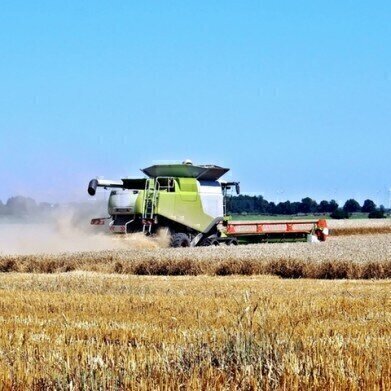LC-MS
Is There Weed Killer in Your Breakfast? - Chromatography Explores
Jan 01 2017
A recent study has found worryingly high levels of the pesticide glyphosphate in some of the US most popular foods. What does this mean for consumers and what exactly is glyphosphate?
Glyphosphate — killing weeds in fields and gardens
N-(phosphonomethyl)glycine — glyphosphate — is a weed killer and crop desiccant. It was developed in the early 1970s by Monsanto — an American agrochemical and biotechnology company — where it was given the name Roundup and it quickly became the weed killer of choice for farmers. The chemical is absorbed through a plant’s foliage and travels through the plant inhibiting an enzyme used to synthesize amino acids.
Another use of glyphosphate is as a crop desiccant applied just before the crop is harvested. Application of desiccators prior to harvesting is carried out for several reasons including, uneven ripening of crops, earlier harvesting of crops and enhanced weed control for subsequent plantings.
The use of glyphosphate increased substantially with the introduction of glyphosphate resistant Roundup Ready crops — these crops are unaffected by glyphosphate and allow farmers to indiscriminately spray the crops, killing off the weeds and leaving the crop unaffected. One of the reasons some groups are against the use of genetically modified (GM) crops.
Carcinogen — WHO says so
In 2015, the World Health Organization (WHO) published a paper about five organophosphate insecticides and herbicides. In the paper was the fact that WHO classifies the herbicide glyphosphate as probably carcinogenic to humans.
The WHO accepts that there is limited evidence of carcinogenicity to humans — but notes that limited evidence means that a positive association has been seen between exposure and cancer but that other explanations (including chance) cannot be ruled out. So, finding glyphosphate in food is alarming.
Weed-killer for breakfast?
The latest study was carried out at the request of two food campaign groups in the US (Food Democracy Now! and The Detox Project). The laboratory that carried out the analysis of the foods —Anresco Laboratories — is an FDA (US Food and Drug Administration) registered lab that has been performing food safety testing since 1943.
The lab used liquid chromatography in conjunction with tandem mass spectrometry to analyse for glyphosphate. The samples were first extracted from the foods using water and methanol, before further extraction and concentration using and ion-exchange column. The extracts were then derivatized and filtered before LC-MS/MS analysis. The detailed analysis of glyphosphate is discussed in the article, Rapid Analysis of Glyphosate and its degradation Products in Surface Water Using UPLC-MS in Selected Ion Recording Mode.
The study found what the campaign groups describe as alarming high levels of glyphosphate in samples of breakfast cereals and biscuits. This has opened a debate that the groups hope will force the US government to reduce the acceptable levels of glyphosphate in food to the much lower European levels.
But with the increasing use of GM crops, the levels are only going to increase. Organic food anyone?
Events
Apr 22 2025 Kintex, South Korea
Analytica Anacon India & IndiaLabExpo
Apr 23 2025 Mumbai, India
Apr 27 2025 Portland, OR, USA
May 11 2025 Vienna, Austria
May 18 2025 Tempe. AZ, USA












